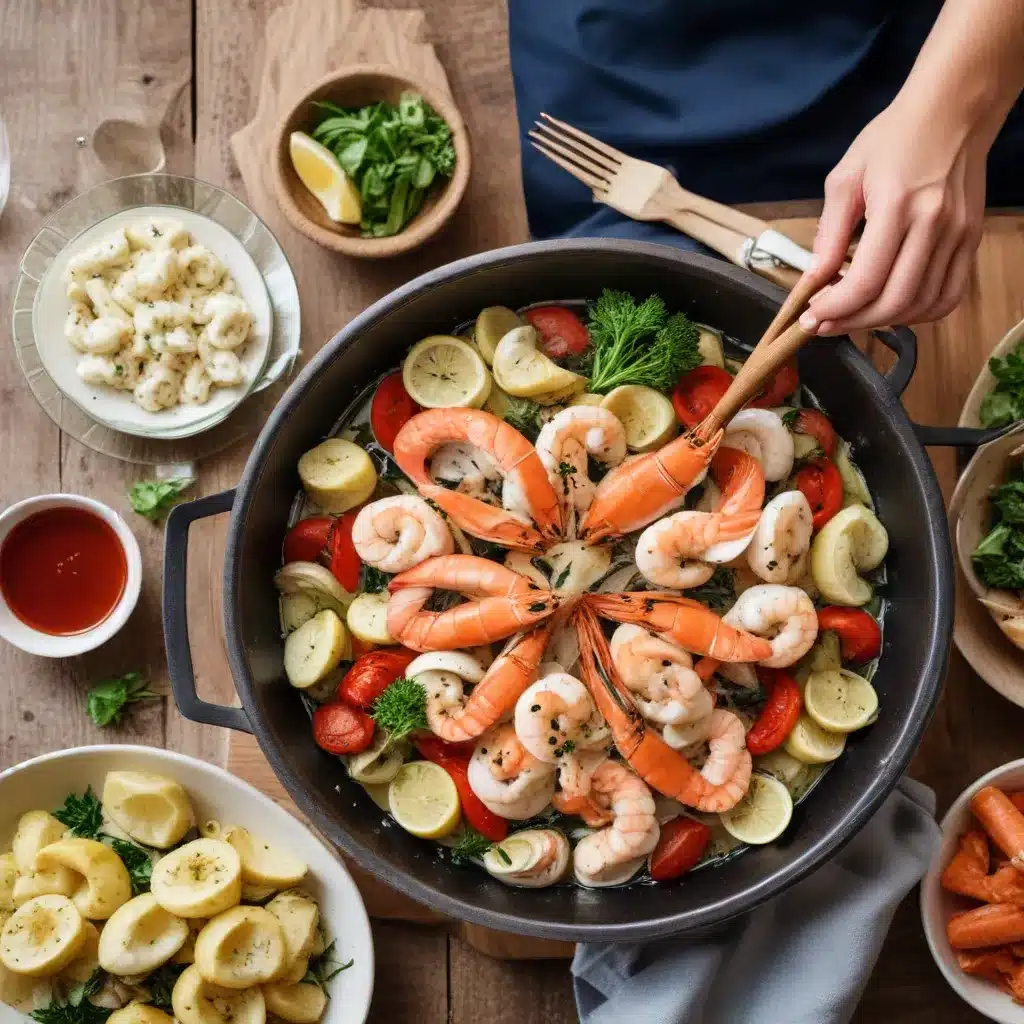
As a seafood dining expert writing for Fish Tales Cafe, I’m delighted to share my insights on cod and other marine delicacies. Whether you’re a seasoned home cook or a budding culinary enthusiast, this comprehensive guide will empower you to expand your seafood repertoire with confidence.
Seafood Culinary Fundamentals
Seafood Varieties and Characteristics
The world of seafood is vast and diverse, with each species offering unique textures, flavors, and culinary applications. Cod, for instance, is a lean, flaky white fish renowned for its mild, delicate taste. Versatile and forgiving, cod lends itself well to a variety of cooking methods, from pan-searing to baking en papillote. Beyond cod, explore the briny richness of salmon, the tender sweetness of scallops, or the subtle umami of sablefish.
Seafood Preparation Techniques
Proper handling and preparation are crucial for bringing out the best in your seafood. Filleting fish, deveining shrimp, or shucking oysters may seem daunting at first, but with a little practice, these skills become second nature. Mastering brining, marinating, and breading techniques can also elevate your seafood dishes to new heights.
Seafood Flavor Profiles
Each type of seafood possesses a unique flavor profile that can be enhanced or complemented through strategic ingredient pairings. Cod, for instance, pairs beautifully with bright citrus, fragrant herbs, and rich, creamy sauces. Conversely, salmon thrives when combined with earthy spices, sweet glazes, or acidic vinaigrettes. Familiarize yourself with these flavor affinities to create harmonious, memorable seafood dishes.
Seafood Cooking Methods
Dry Heat Cooking Techniques
For seafood that’s crisp on the outside and tender within, consider dry heat cooking methods like pan-searing, grilling, or broiling. These techniques caramelize the surface, concentrating flavors and textures. Proper temperature control and timing are key to achieving that perfect sear or char.
Moist Heat Cooking Techniques
When you’re craving a more delicate, silky texture, moist heat cooking methods like poaching, steaming, or en papillote (in parchment paper) are the way to go. These gentle techniques preserve the natural juices and delicate flavors of seafood, making them ideal for more fragile species or preparations.
Combination Cooking Techniques
Hybrid cooking methods that combine dry and moist heat can also yield exceptional results. Searing fish before finishing it in the oven or poaching seafood and then broiling it to a golden brown are two prime examples of how to leverage the strengths of multiple techniques.
Seafood Dish Composition
Balancing Flavors
Crafting a harmonious seafood dish requires thoughtful balance. Complement the natural sweetness of scallops with a zesty lemon-caper sauce. Or balance the richness of sablefish with a bright, acidic mango salsa. Mastering the interplay of flavors is key to creating dishes that captivate the palate.
Textural Considerations
Seafood dishes thrive when they offer a range of textures. Pair the tender flakiness of cod with the crunch of panko breadcrumbs. Or contrast the delicate, silky nature of poached shrimp with the bite of al dente pasta. Paying attention to texture can elevate a seafood dish from good to great.
Plating and Presentation
While flavor is paramount, the visual appeal of your seafood creations shouldn’t be overlooked. Experiment with artful plating techniques, vibrant garnishes, and creative saucing to make your dishes as beautiful as they are delicious. Sharing your culinary masterpieces on social media can also be a fun way to connect with the wider seafood community.
Seafood Nutrition and Health Benefits
Nutrient Profiles
Seafood is a remarkable source of essential nutrients, from high-quality proteins to heart-healthy omega-3 fatty acids. Cod, for example, is an excellent source of lean protein, vitamins B12 and B6, and the mineral selenium. Incorporating a variety of seafood into your diet can provide a robust array of vitamins, minerals, and antioxidants.
Dietary Recommendations
The Dietary Guidelines for Americans recommend consuming at least two servings of seafood per week. This can help you meet your protein needs while also reaping the cardiovascular, cognitive, and anti-inflammatory benefits of seafood consumption. And for those following a gluten-free diet, seafood can be a wonderfully versatile and nourishing option.
Sustainable Seafood Choices
As you expand your seafood repertoire, consider the environmental impact of your selections. Look for wild-caught or responsibly farmed options that align with your values of sustainability and ocean conservation. Resources like the Monterey Bay Aquarium Seafood Watch program can guide you toward making informed, eco-friendly seafood choices.
Seafood Trivia and Global Traditions
Did you know that cod was once referred to as the “gold of Newfoundland” due to its economic importance to the region? Or that the Japanese delicacy fugu, or pufferfish, requires specialized training and licensing to prepare safely due to its potentially lethal toxins? Exploring the intriguing history and cultural traditions surrounding seafood can add depth and context to your culinary explorations.
Seafood and Wine Pairings
Elevate your seafood dishes with thoughtfully selected wine pairings. The delicate flavors of cod pair beautifully with a crisp, unoaked Chardonnay or a zesty Sauvignon Blanc. Salmon, on the other hand, can shine when complemented by a medium-bodied Pinot Noir or a rich, oaked Cabernet Sauvignon. Experiment with different combinations to discover your perfect seafood-and-wine harmonies.
Whether you’re a seasoned seafood enthusiast or a newcomer to the culinary world, I hope this guide has inspired you to dive deeper into the vast and fascinating realm of seafood cooking. By honing your techniques, exploring flavor profiles, and embracing sustainable choices, you can become a confident and creative seafood chef, ready to delight your family and friends at Fish Tales Cafe and beyond.

